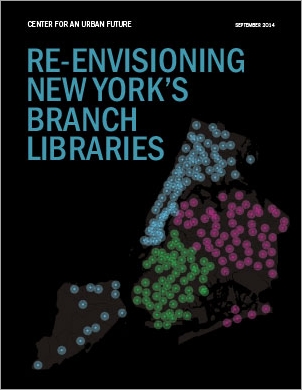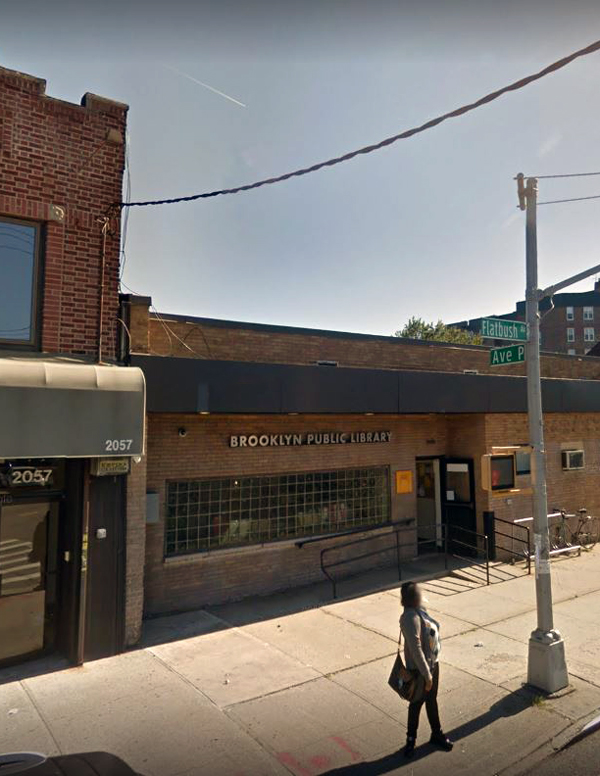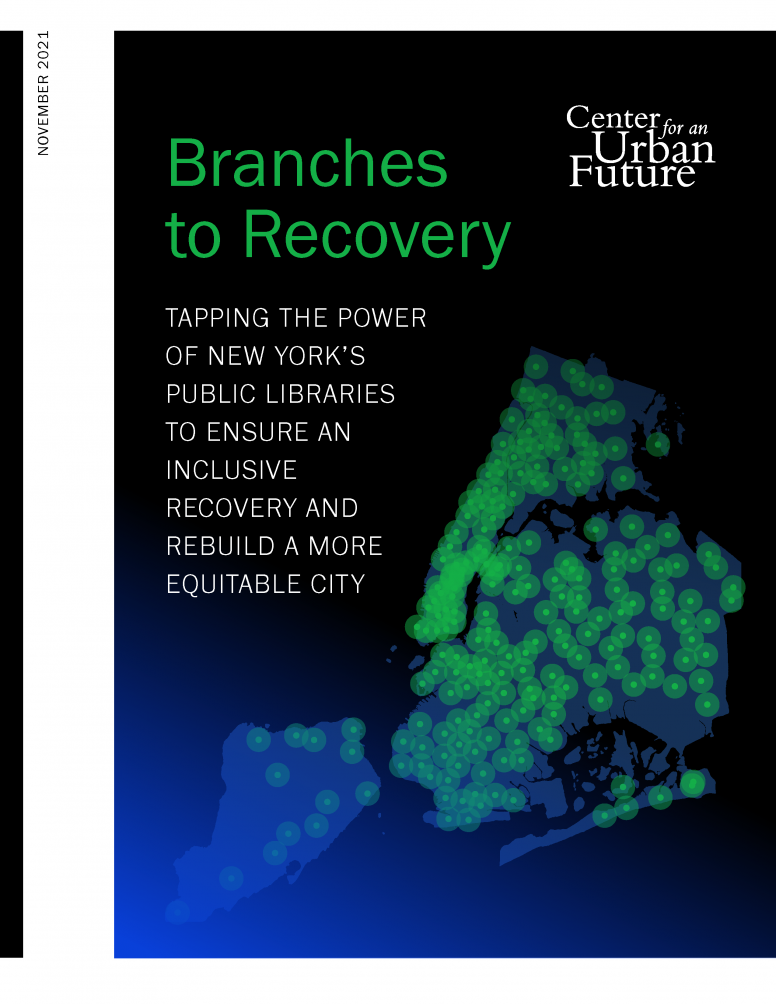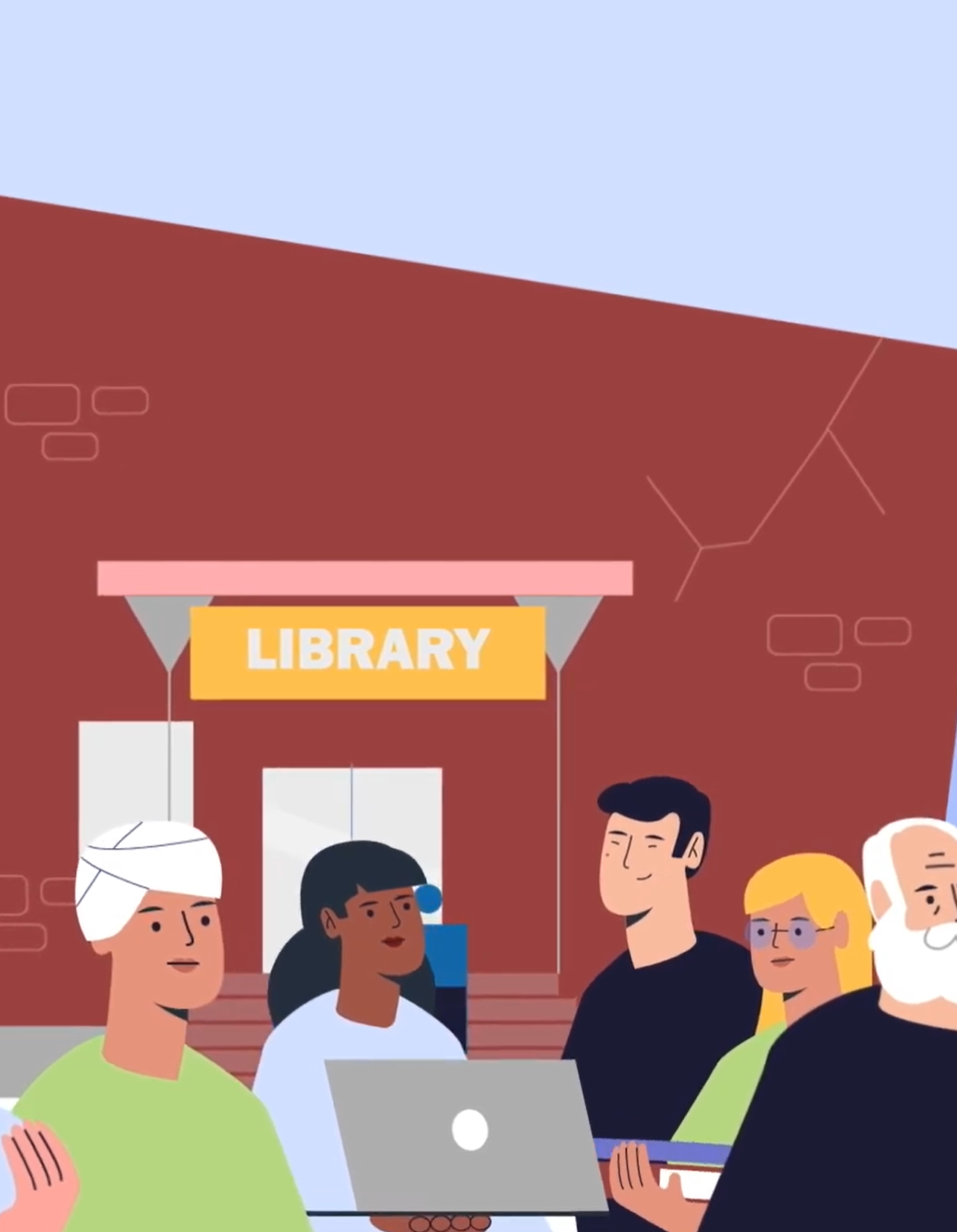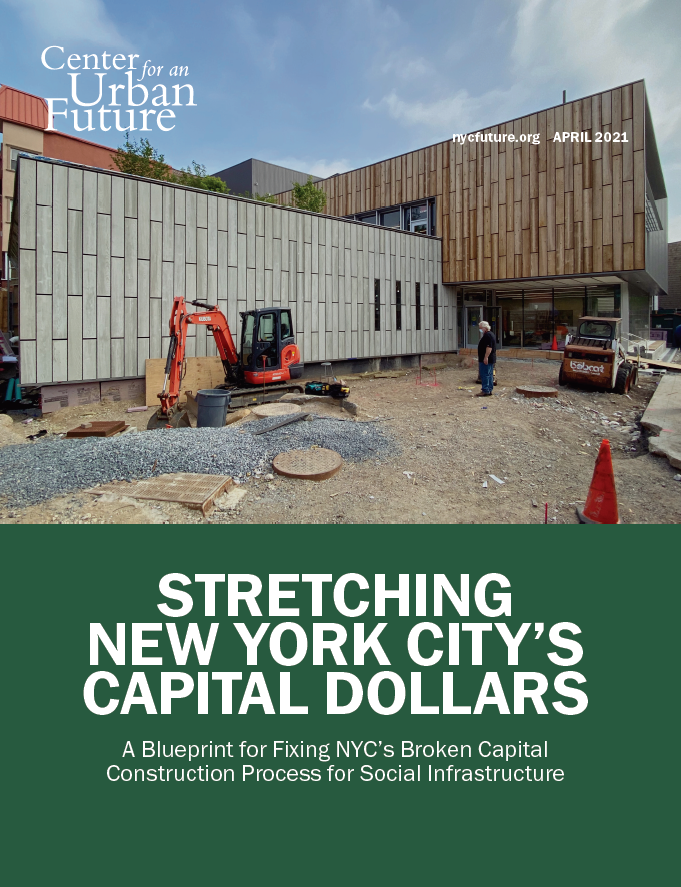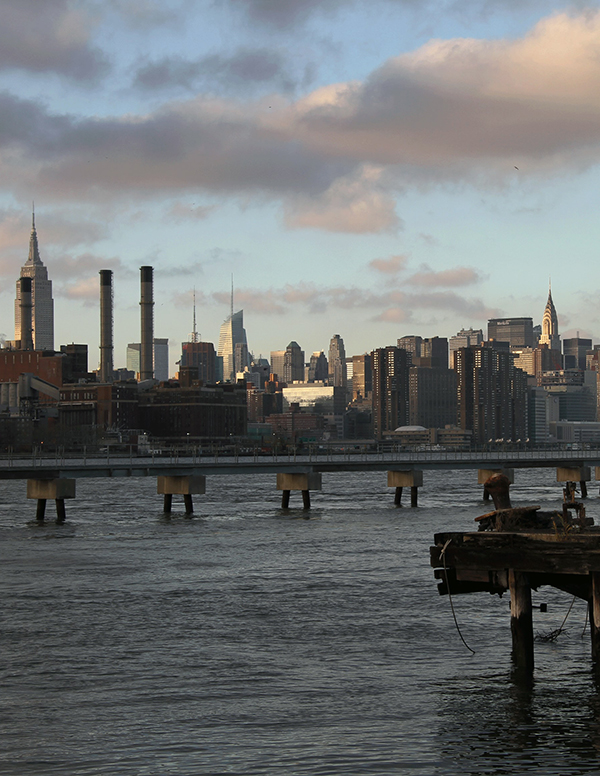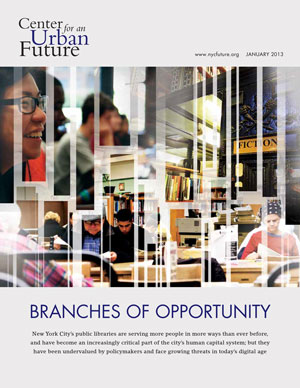The following are the Key Findings from Re-Envisioning New York's Branch Libraries.
Read the full report (PDF).
View the Key Findings from the report.
View the charts and tables from the report.
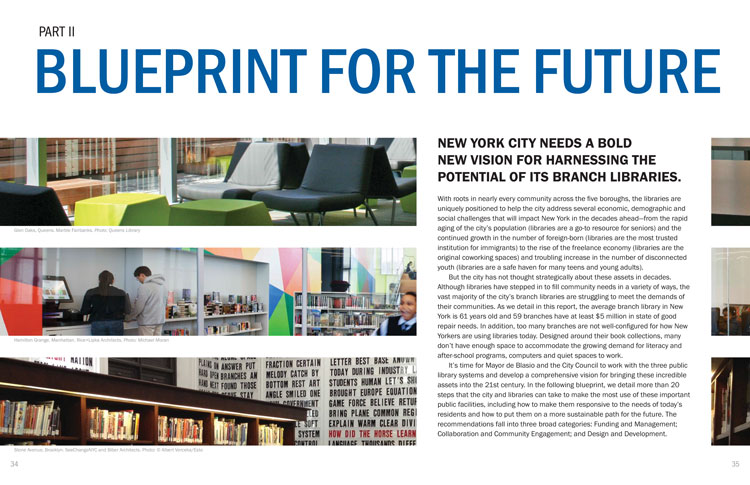
We recommend that the following steps be taken by city officials, library administrators and other stakeholders. Detailed recommendations can be found in Part II of this report.
Funding and Management
-
Create and finance a citywide capital plan to bring NYC libraries into the 21st century.
-
Create a “Director of Libraries” inside City Hall.
-
Give the libraries a capital budget to create a pipeline of repair and expansion projects.
-
Package similar capital projects into a single contract and bid.
-
Pool discretionary allocations to form a library innovation fund for each borough.
-
Reduce construction costs and delays for new and renovated libraries.
-
Refine and standardize the city’s interpretations of capital eligibility requirements for libraries.
-
Revisit capital eligibility rules and expense funding formulas to cover rising Information Technology costs.
-
Continue to invest in floating collections and consolidate management operations.
Collaboration and Community Engagement
-
Tie library investments to larger community development initiatives.
-
Create opportunities for community involvement in the design of new libraries.
-
Invest in spaces that facilitate and even encourage outside partnerships.
-
Make libraries a stronger presence in their communities.
-
Make libraries partners in community resilience planning.
Design and Development
-
Maximize public space.
-
Maximize flexibility.
-
Prioritize electrical system upgrades to increase the number of outlets.
-
Invest in library hubs that can anchor services for nearby locations.
-
Co-develop libraries with affordable housing.
-
Invest in joyful spaces.
-
Use outdoor spaces more effectively to create opportunities for programming and civic engagement.
-
Expand the libraries’ footprint with storefront spaces in retail corridors and transit centers.
-
Develop branches and spaces designed specifically for freelance workers.
-
Find spaces to test out new ideas and services.
Read the full report (PDF).

